Hit That! Third Court and First Court at the Irving Field Sports Gym
at Ball State University
Been There Done That...
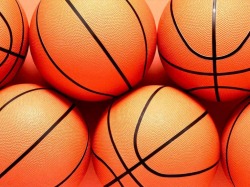
Walking through the vast, open, dark, and somewhat sinister courtyard from Lafollette Complex to Irving Gym after a later dinner, a foreboding feeling of nothing good was slipping through the cracks of head, stirring my thoughts into a concoction of doubt. Maybe Irving was going to be filled with more stereotypical jock characters tonight. For that I do not know, and I will have to face the future when the truth appears.
Basketball, for me, has always been something that is fun to partake in. The thrill of competition, hilarity with your friends, or a chance to prove yourself to the skilled players motivates me to lace up my “sneaks” and get on the court. Being at Ball State University, in Muncie, IN, offers you opportunities to do just that.
With places like the Field Sports Building (Gym) at a Division I college campus, you are bound to find a plethora of personalities, groups, and belief systems among the players under the one roof. I’m sure there are kids playing basketball just to blow off steam, to have fun, or just because they love the game. I feel there is a deeper reason why there are so many kids with an (generally speaking) arrogant attitude.One player might think higher of themselves and look down upon the rest of his teammates for certain motives. Being too slow, not identifying with one particular clique, not being able to play well are all possible intentions for a certain ignoramus to walk higher than the rest of the team.
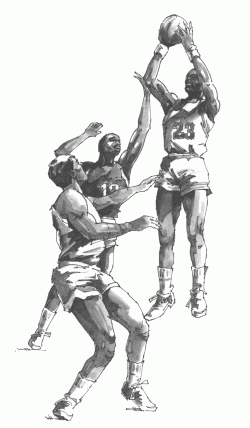
The psychology of the team sport has caught my interest since I have been involved with both recreational sports and school sports in grade school, middle school, and high school. I have found myself pondering on why the team acts the way they do during the time outs and half times of games and walking home from practices.
I want to experience this culture from another perspective. Not as a player, but a bystander I could possibly see other views about the team. During the games I never had time to answer any of these questions relative to the function of the team, and now from another view I wouldn’t have such biased and influenced views. A different perspective of the group might bring about a new respect or abhorrence for the sport and league.
My own experiences with basketball also shape the perspective I am molding by viewing these players exercising their practice in the game of basketball. I have played this game both for organized teams and for recreation for my entire life. I highly enjoy playing the game and I find the game to be both mentally and physically challenging. Basketball provides a solid work out as well as a good way to be resilient in thinking on and off the court. Because I have played this game before, I see the people of the gyms with existing presumptions.
I am looking at the darker side of a bright topic. Basketball was created for recreation, entertainment, and fun. Human beings have transformed the game into a fast paced triathlon of strategy, competition, and strength in physical ability. One must wonder why a fun game was turned to this point.
A Stroll through Gym…Just Kidding…Run!
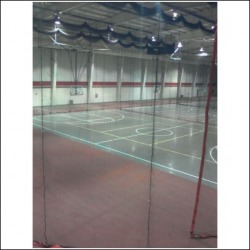
The building is located in the Irving Gymnasium complex, located across the street from Lafollette Complex Residence Hall. The gym is a hot spot for college athletic life, organized and unorganized. The gym is always occupied during the operating outs of 7 to 11, with random breaks in between for other sports. The journey begins by opening the double doors into the gym.
Walking into Field House Sports building in Irving Gym, the first characteristic I noticed was the high contrast in lighting compared to the cold Tuesday night sky hovering over Muncie, Indiana. The lights were very bright, which allows the players or joggers to see most things in the atmosphere of sight to possible prevent injury, allow better sight for the goals of players (such as the basket), and possibly to maintain each person’s awareness of the space.
Defining the space within the one room, four walls, a ground and ceiling, attached building to Irving Gym might appear to be an easy task at the first glace, but one can notice spaces within spaces. A black divider net is runs the perimeter of all four courts, and two divers are placed between courts one and two and courts two and three. Courts three and four were not separated, causing a presumable mess between the volleyball players on court four and basketball players on court three. The first court straight ahead of the check in desk you would walk past when first entering, is primarily used for basketball.
Another feature one notices about the Field Sports Gym initially is the large amount of volume contained in this box. The ceiling plane is about 30 to 40 feet tall and exposes the structural beams which hold the roof together. After viewing the ceiling, the eye is drawn downward towards the walls, which look to be steel and are primarily off-white with a maroon stripe bisecting the white in the middle section. From this point, the eye falls upon court number one again.
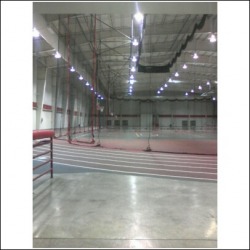
I continued walking down the dusted and faded maroon track, which had a gritty and granular surface. The track was five lanes wide on each straightaway and five lanes wide on each turn, which perplexes me. Won’t runners competing in a race get cut off? Maybe only five runners compete for each heat of each race. The track is divided like a normal indoor track with white lines. The straightaway closest to the north wall of the building runs into a large, red pole vaulting mat.
As I turned one last time before exiting the building, I looked at the entrance and took a breath of the stale, dry air. I still
found that the first sight one would see was the net facing the visitor upon arrival into the gym. I thought of the players from court
number three once more, and how they must be tired because between twenty men and ten players on the court at all times, the
players must be tired. I grabbed my identification card and smelled my jacket. I smelled like a heavily chlorinated gym sock that was
worn only once by a runner for cross country practice: salty and sweaty, but slightly covered by a hint of Clorox Cleaner. After
seeing the competition and thinking about the game of basketball again, I wanted to play more than ever.
What’s Going On Off the Court…
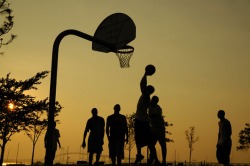
The lines spelling out a box seemed to be the constraints of socialization. Once the game was in session, the players would stay inside the rectangle and the sideliners would stand and stare unanimously at the ongoing game and hold very brief conversations about the next set of games which the sideliners would rotate in for the losing team of the current game. These conversations would include bragging about dunking over another player’s head or what each player was going to do in the next game, such as scoring or trash-talking other players currently playing.
The conversations also pertained to partying and girls. Many conversations I picked up on were about how last night’s sexual encounter at Christine’s places was, or how drunken one player was last Thursday night. Since it was Tuesday, I laughed at the thought of the player who had to brag about his drinking escapades and thought to myself, “He must be looking for attention or acceptance from someone.” The ironic fact was that this kid was the same kid who dressed sloppily in the white tall tee.
One thing that players on and off the court did perform was shooting around with two or three balls at the most between game sets. The players seem to bond closer than when the games are in play. By holding small conversations between small sects of two to four people, occasional laughter, and rebounding and shooting only two or three balls compared to the twenty some kids on the court, the players could socialize.
Along with the gaps between the games and shooting around, one other tie between the two groups of players was that they all dressed and looked very similar. All wore slightly, but not ridiculously baggy t-shirts of various sports teams, multicolored athletic shorts, and Nike basketball shoes. I had found only three players within the two sets of games I witnessed that were wearing other shoes. The look also was completed by hairstyle, which was either a one inch clipper cut or very close in that length. Based on appearance, the players from both sections should socialize well, but there was still one limitation holding the players back.
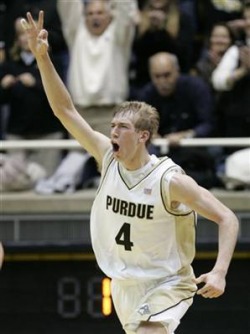
The sideliners would converse amongst themselves; speaking of friends they knew playing for Division I colleges, specifically Purdue. I wonder if these kids were speaking of Robbie Hummel or E’Twaun Moore, who are originally from my area of Northwest Indiana.
The sideliners were definitely different that the players on the court. The court players seemed to be stoic and possibly complete jerks. I was lead to assume this because no one except Chris was yelling, or even cheering after they scored a three point shot.
One Caucasian player, whose name I could not comprehend through the grunted yelling, wore shoes with laces untied, but in a stylish sense. He could have easily tripped over himself within seconds! He was about average height, had very short black hair, and had a very slovenly appearance. His shirt was tucked in at the front and out in the back. Also, the white t-shirt was clearly too big for him and I pondered on why could he have possibly chosen this style of clothing to wear. Maybe he didn’t care what he looked like, or what people’s perception of him was. I thought he looked ridiculous, and the style didn’t help too well when his black shorts kept sliding down his legs from sagging them too far off his rear.
Observing the court number three game sets sucked my attention away from the rest of the gym which seemed to filter out closer towards 10:00 p.m. The games proceeded for another half hour, which is when I began to notice more weird looks coming from different players. I bet I was an easy target wearing a sling and dressed in jeans, sitting on a red wrestling mat writing notes about their behavior. The thought made me chuckle inside and made me think to myself, “Wow I really must have gone insane thinking about people socializing when I have so much homework due in the next week.” At this point I began to exit the gym as the sets of games continued on court number three. As I left, I noticed several sideliners grab their khaki colored Hollister Coats and follow about 15 feet behind me.
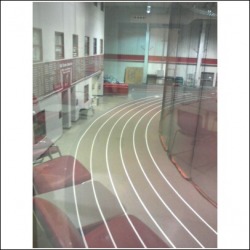
When exiting the gym, I saw the same skinny brown haired girl whom I exchanged my identification card for my admittance to the Field Sports Building. About 20 feet were left approaching the worker before I noticed the giant Track and Field Record Board hanging over the entrance/exit doors. The board read just that: Ball State Track and Field Records. I pondered about my track career and how if I might have tried out for the track team at Ball State, I might have made junior varsity. The thought came and went as did my balance when I tripped due to the bright lighting and focusing on the board above me.
My observations bring me to ponder if the two groups can ever come together on the court. I know that off the court, the players of opposing teams shake hands or greet each other excitedly after the game. I don’t believe, based on playing three years of men’s recreational basketball with friends from high school, the competition between friends can ever deteriorate while on the court. I always enjoyed beating my friends, no matter how close, and having bragging rights the next day when I saw my friends in classes. Being that the goal of the game is to win, competition will always be a factor. Players that know each other or those that are unacquainted with each other will not differ in the competition level. The players will play to win and will put aside friendship and most aspects of the fun of the game in order to achieve that goal.
Just another Thursday Night…
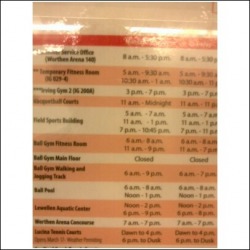
Walking over to Studebaker West, the home of two recreational basketball players who frequently are seen playing at the Field Sports Gym (Building), I notice the rain bend the light as I pass the streetlights. Knowing these two players were very opposite in how they approached the game, I wanted to ask a few questions to see how correct my assumptions of this sport really are.
After watching this kid play basketball, I had to know how he approached the game and how he was. To me, I found that aside from the average cocky kids playing ball, this one was interesting. His name was Patrick (his name was changed) and he was around six foot two and weighed near two hundred pounds. Being Caucasian and having a rather large upper body, Patrick could do some damage on the court.
Attentive to the strategy of the game, Patrick was more concerned in being fair and playing the game with your head rather than going out on the court for guts and glory. He actually is a very humble player and enjoys executing success through teamwork and not through individual accomplishment. He feels “the star player always needs his supporting cast.”
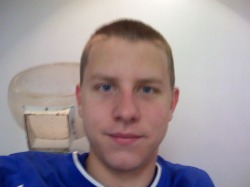
We began to speak about how some white kids on the court who are skinny and look like they are four years old try to put up a tough front and dress ghetto. By ghetto attire, I mean Nike high-top Dunks in vivid colors, athletic shorts so long and baggy they look like a pair of pants, and an oversized tall tee with their favorite sports team logo or urban street wear clothing line such as South Pole. Then the conversation shifted to how the kids that play on the courts are mostly “wannabe thugs” and think they can bring game to the courts.
Patrick tells me he is from Highland, IN, my hometown, and I recognize his face and realize this kid was in my classes back in High School. I told him I was pleased with his game and to see him playing again. Patrick is twenty years old and grew up in a very sports affiliated family. He has played basketball and baseball for the majority of his life as well as a few years of football.
Patrick usually goes to play recreational basketball and pickup games back home at the Lincoln Center, which is very similar to the Field Sports Building. Many kids go to the Lincoln Center, according to Patrick and my own assumptions and observations, have the same cocky attitude toward the game.
The Lincoln Center and the Field Sports Gym was very similar in the types of people that visited the courts. The crowd was always mixed with a batch of cocky regulars that seemed to be in their own fantasy world with illusions of grandeur and carried egos a bit too big for their own two shoulders to carry. The regular kids have their own subculture of assertiveness and self confidence that cannot be swayed by those observing them, but by can be altered when humiliated on the court by another player or players. We pondered on the thought of their upbringing and how their home life could have affected the way they approach competition and playing recreational games. Most children playing at the Lincoln Center on a regular basis were not involved in outside activities other than recreational basketball. According “Adolescents Participation in organized activities and developmental success 2 and 8 years after high school: Do sponsorship, duration, and intensity matter?” adolescents will find a higher success rate if involved in multiple extracurricular activities (Gardner, Margo, Roth, Jodie, and Brooks-Gunn, Jeanne 814-830). The same children, Patrick and I found, grow up to be the arrogant gym rat types that can be easily spotted in the Field Sports Building.

Changing the subject to further get ourselves worked up about arrogant people, Patrick and I spoke of music and the relation the sports and recreational activities. Rap music is widely popular and associated with basketball and basketball culture, and most stereotypical basketball players will enjoy the fruits of the music and the hip hop culture. The two cultures of hip hop/rap and basketball seem to intertwine, especially within African Americans. Many of the kids playing basketball, particularly the black players, will wait on the sideline for a pickup game at the Field Sports Gym, and will rap songs from Lil’ Wayne or sing songs from T-Pain. I heard someone rapping the chorus to “Fireman” by Lil Wayne and picked up on this activity.
Patrick also told me that he listens to more folk and independent rock music. I started to draw inferences and parallels between Patrick and the other players. He stood out because he did not have the arrogant attitude, while most of the other players did. Maybe the rap music culture affects the overconfident player’s attitude which also leads these same players to believe they can play better than other players. The rap music might have weighted with other issues as well.
The studies of African American recreational basketball players in urban areas such as the west side of Chicago, IL show that a hierarchy of social status reigns over these aforementioned players. Two players stood out more than others because of their skills. These players were allowed to certain neighborhoods and gained respect of several shop owners and local residents which fed their egos even more garbage (Atencio, Matthew and Wright).
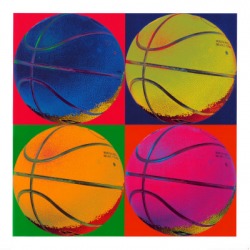
The comparison of egos is easily seen in the players that Patrick and I speculated on. One can easily pick out a very skilled player, such as an African American player named Chris. Chris was a very nice person, but on the court he was business. He was aggressive, but maintained a cool attitude and incorporated teamwork and strategy into the game of basketball. This proved that Chris was a natural leader, but he was also given the opportunity to call out other players’ faults and not be judged on his own.
Patrick views the young adults that play at the Field Sports Gym as nice and enjoys running into people he knows. Playing with friends and teammates is always a great thing to him. He says there are your typical gym rats who think that they are the best basketball players on the court but have no basic fundamental skills. He also said there are plenty of nice guys just looking for a good game of ball. Going to play basketball at the Field Sports Building serves as a relief from the day to day school stresses of Ball State University. This is an outlet to many young adults to exercise and take out stress in a productive form. He describes his overall experiences at the Field Sports Gym nothing but a good time.
Patrick was eager to answer my questions and said “he felt like he was in the NBA or something.” Clearly he enjoyed the attention of an interview and felt that his nighttime hobby of basketball playing was finally being noticed. Patrick was probably one of the more nice people I have ever met, and was extremely willing to speak about his background and perspective of the gym. After all, the perception of others shapes the so called feel of a space and ultimately defines the reputation of the space.
This attitude was clearly different than those of the players you see more often: the cocky showoff types who feel their talent and skill (or lack there of) should be respected and revered. Another face of the idea that I gathered about the people at the Field Sports Building is slowly beginning to illustrate the mural of a unique culture. However, there are more sides to every story, so I must see how these perceived “cocky” and asshole type young adults approached the game and players.
Flip the Coin…Another Side…
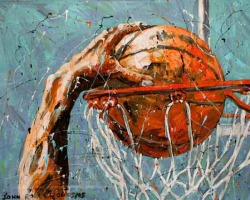
We always must be able to form valid opinions by speaking to another side of an argument that we might be biased towards. The biases might change, or might be strengthened. The only way to plunge to the bottom of an affair is to do just that: go for it. You have to emerge yourself in uncomfortable situations; after all, these people are forming your perception of hostility or comfort of the space.
Another Wednesday night at the Field Sports Building: more people, but the same feel. Competition and fun were floating amongst the air particles in the muggy gym. I saw a few recognizable faces, and watched several pickup games. One player was slightly skinnier and smaller than the rest. He seemed very aggressive and had incredible speed. I spoke to him after the pickup sets around eleven o’clock at night when the gym closes.
Derek had been playing basketball all his life and was from Crown Point, IN. He had prior experience with high school basketball and played for the high school team for three years. His senior year he decided to just play for recreation at the local YMCA where he and his friends would “ball it up.” He told me he met lifelong friends playing high school basketball and still remains close with all his teammates. He finds that the key to basketball is competition and winning, he feels this makes the game fun and loves to reach the goal of a victory.
Derek was a considerate person off the court, and was a very amiable guy. If you first saw him play on the court, however, you might judge him as a cocky player. He plays with sheer determination and plays hard to win. He views the games as a fun time, but his definition of fun is to ultimately reach to goal of winning. Competition and skill are pumping through his blood when he is in motion with the ball in hand on the court, but he also is a very understanding person off the court. Derek offered a fellow player advice about a girl problem when walking to the drinking fountain, telling the other lanky player to “move on and do what’s best for you.”
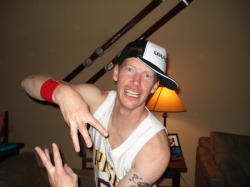
One cannot judge Derek just by his demeanor on the court; however, those who do not see the more charitable side to him perceive him as a royal jerk. Also thinking from the standpoint of a bystander, Derek might represent the cocky kid perception. Maybe these kids that are egotistical are just this way on the court. I have to find out more, so I talked further with Derek.
Wanting to know more of his background I asked further questions. I asked him about other basketball experiences back home in Crown Point, Indiana. Derek replied and said he played at a local park in his hometown in which he dubbed “Wells Street.” According to the recollections of Derek, this park was where the real competition was and one could find intense games. Also, egos were running rampant as well as the players on the blacktop.
I wanted to see if this same atmosphere on the blacktop could compare to his recreational basketball playing at the Field Sports Building. Derek plays basketball for a much unorganized recreational league currently at Ball State. The league is just a designated time for large groups of kids to play pickup games at the Field Sports Building. This is the same league that Patrick plays for. This unofficial league takes place from 8-11 Sunday nights through Thursday nights.
Derek also spoke about a very interesting de facto law of the courts. “People can shoot around, but if five on five comes in, it overrides everything.” Derek was saying that a pick-up game of five players versus five players can take over a court, particularly the first court and third courts because they are used primarily for basketball while courts four and two are used for volleyball and soccer. If any basketball players are just shooting around, they must move for the pick-up game. I found this rule to be quite interesting. Even the players just shooting random baskets would just go like a flock of sheep away. Wouldn’t they want to stay because they were there first? The courtesy of the pick-up game in progress is a necessity for respect of other players at the Field Sports Gym. One would be singled out and possibly made fun of by the five on five players, but what mostly happens is that the five on five players do not care and proceed with their game without any consent of those playing on site first.

Derek agrees with this rule of five on five overruling any other activity on courts one and three. I wanted to see Derek’s reaction to other players on the court and he gave me some personal opinion and insight to these players. Derek views the kids that play at Field Sports Building as people you either like or do not like. There was not a very distinct middle or gray area where different personalities fall into. On the court, the Players play to win and showcase their talent while simultaneously trying to build their status on the court. The very male dominated sport of basketball requires that you establish your masculinity and play very hard or smart. You gain respect amongst your peer players if you can keep up to their skill level and pace. You must establish your place to form new relationships in high competition games, but in relaxed fun games, you still must establish some kind of masculinity, but the setting and feel is much more relaxed.
Derek’s favorite part about playing at the Field Sports Gym is that he meets new people constantly and gets to interact with others that share his passion and love of the game. He finds it thrilling to find new competition on a daily or a weekly basis. By returning to the Field Sports Building to play basketball, Derek gets a chance to improve his skills and learn something new each time. Improving his game and getting better at playing basketball is a crucial element to his developments as a better player. Simply put, “he enjoys practicing to get better.”
Each person by themselves is a completely unique structure that many do not understand or get an opportunity to figure out. On the court, the competition heats up, but the recreational sport played in the Field Sports Gym is one that is played out of passion and enjoyment of the game. The main reason most kids play is to have fun whether the mood is set by fierce competition and aggressiveness or playful and relaxed games. Each pickup game is different, each player is different, but each feeling is the same.
You cannot solely judge one player’s personality because they value competition on the court. Derek proves that you can be a compassionate and thoughtful person off the court, but he brings his aggression and fierce competition skills to the court. The lines that spell out this box on the basketball court only hold so much truth. I compare the observation of these players to watching rats in a clear glass cage. There is only so much space, so one must compete for territory and respect in order to survive. The game is just that way, except no one dies thankfully. The players must dominate on the court to gain respect, because who you are off the court is left exactly off the court.
Time Out! So why Do I Care?
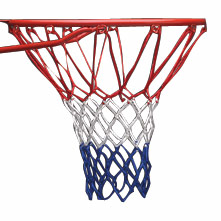
The answer is simple. We are all going to be faced with unfamiliar situations whether the situation occurs in a gym, a concert hall, a library, or a new workplace. To fully understand one side of a culture, you must take the leap and dive into the place. The Field Sports Building offers just that to those unfamiliar with basketball culture. The experience one can feel from the court and on the court is one that requires the person’s presence. Really, what the whole culture boils down to is that the culture is focused around a game. This game is very fast paced and requires reflex thinking, or instant judgment from an action. The place is shaped by the perceptions of those who visit the four walls that define the space.
The game and those who partake in the game create a sense of atmosphere. The Field Sports Building without the people to shape the perception of place might just be as interesting as an old empty shoebox, an abandoned factory, or void room. People who play basketball, played basketball in the past, and want to learn the structure of the game come to visit the field Sports Building. The building attracts all types of personalities, but they all want to play basketball at that time; after all, that is why they made the choice to walk from their dormitory rooms or apartments.
Recreation centers were designed to attract the people that were aggressive in the health. The people going to these building want to see a definite change in their physique, want to better the skills in a game such as basketball, relieve stress and aggression, and overall improve their well being. Ever since the 1920’s, recreational buildings have been used as an outlet for these aforementioned folks to go to exercise their bodies and minds. Starting on college campuses, these buildings attracted young adults to play sports. The sports were eventually not enough to contain the demand for physical activity, so the architects designed accordingly. Wellness Centers were being proposed as the alternatives to bland gymnasiums with an open room for basketball or volleyball. The wellness centers included work out rooms, or rooms with free weights, benches, treadmills, bicycles, and machines geared toward muscle toning and building. These buildings were being designed to fit all physical interests and provide a more sociable environment to create cultures that are like the Field Sports Building (Bogar).
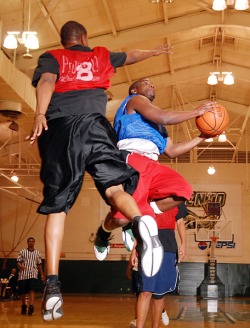
The people are so diverse one cannot capture one personality, but one can capture the competitive atmosphere. The players all play, in some degree, to win. The cocky players obviously want a victory and will be going after their goal of a win viciously and with intent to make their own selves appear to be great. The hierarchy of the male mentality applies to the game of basketball. The players with supreme skill over receive the same respect on and off the court. In classes outside of the gym, these players form a bond with other like players and ignore of belittle the players of lesser skill. Places around campus where other players run into each other who frequently visit the Field Sports Building serve as the outside-of-court interactions these players make. The more skilled players appear to have more power and respect that the ones who are not as skilled (Atencio, Matthew and Wright). Giving handshakes, nods of hello and approval, and shouting their names (sometimes their last names) are just signs of skilled players recognizing their similarly skilled friends from the court.
The place provides visual elements and stimuli that provide ample relation to the culture. A simple hoop painted orange, a white, blue, and red net, and a transparent glass backboard are enough to bring basketball to mind. The raised bumps of the leather ball, the bleach smell, dry air, cool temperature inside the gymnasium even in winter, and the bright lights can bring about the memories of playing ball with friends at the Field Sports Building.
The attitudes of the players can be remembered by these sensory details as well. I can smell that “gym” scent and recall the cocky attitudes and the uncomfortable feeling of standing watching a group of people playing basketball. I was standing with a separated shoulder, carrying my arm in a sling, and hoping to jump in to ignite my old skills of playing basketball.
Several weeks later, I was able to jump in and play with these characters that I have been watching. Nothing clarifies your assumptions than experiencing the elements first hand. My assumptions about the cocky attitudes and egos were exactly correct. As a player’s shot accuracy and shots made increased, they become surer they were great. Not every player was like this, but most can be categorized as competitive.
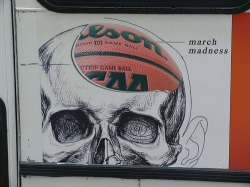
Each player, as different as their personalities are, has a level of competition in them. You walk into this building wanting to make a basket. You want to see an improvement in your skill and you want to win. Winning and playing are just a little more fun than losing and playing. The courts are always a good time if you can approach the game with a positive attitude. Each game you play, every word you say, and the way you look at the people within the lines that draw out the game of basketball will shape this competitive place, but the place will always remain the courts you bring your skills to and leave any other inhibition behind. Game on!
Bogar, Craig T. “Trends in Collegiate Recreational Sports Facilities.” The Sport Journal. March 2009. April 3, 2009.
http://www.thesportjournal.org/article/trends-collegiate-recreational-sports-facilities
Gardner, Margo, Roth, Jodie, and Brooks-Gunn, Jeanne. “Adolescents Participation in organized activities and developmental success 2 and 8 years after high school: Do sponsorship, duration, and intensity matter?” Developmental Psychology. 44.3 (2008): pp. 814-830
Gardner, Margo, Roth, Jodie, and Brooks-Gunn, Jeanne. “Sports Participation and Delinquency: the role of peer context among adolescent boys and girls with varied histories of problem behavior.” Developmental Psychology. 45.2 (2009): pp 341-353.
Atencio, Matthew and Wright, Jan. "We Be Killin' Them: Hierarchies of Black Masculinity in Urban Basketball Spaces.” Sociology of Sport Journal 25.2 (2008): p263-280, 18p.
